Category: Mexico Mission Hymns
-
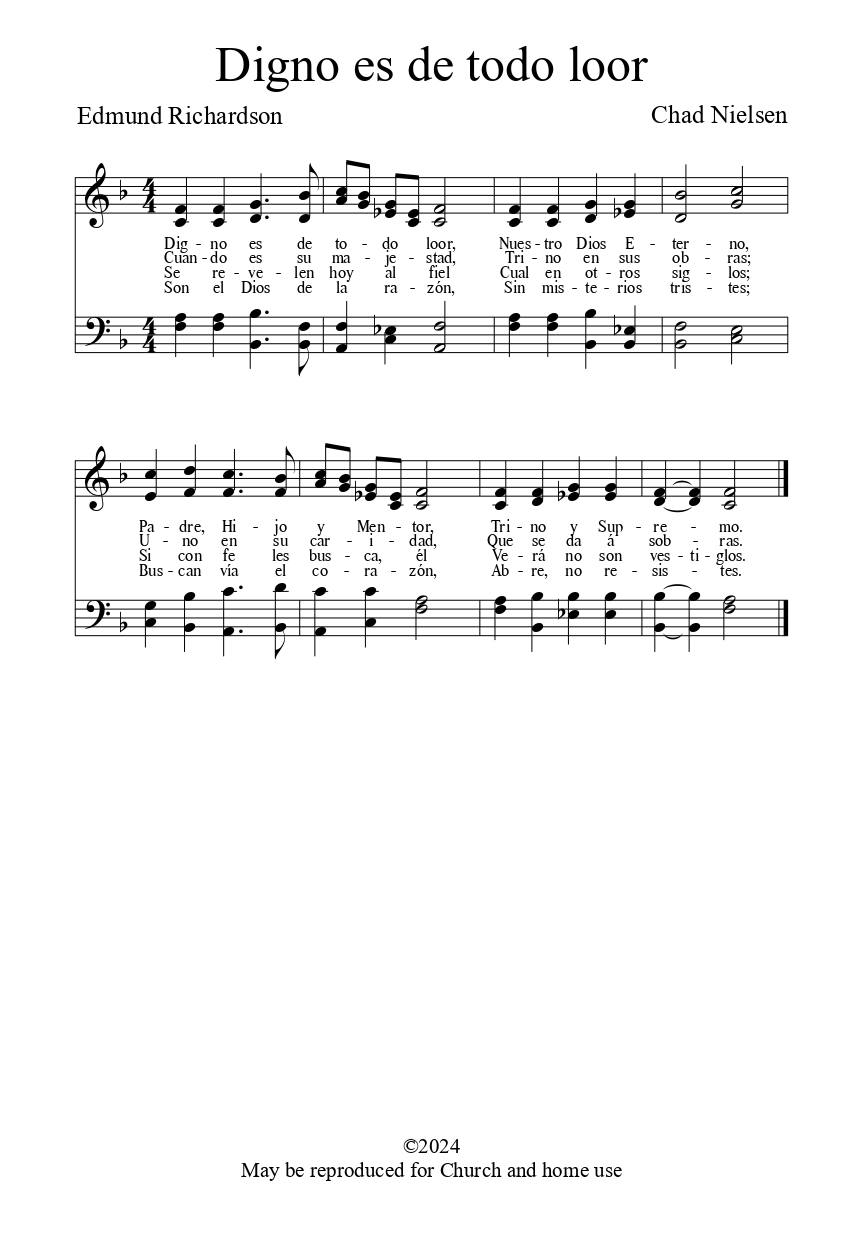
“Digno es de todo loor”
“Digno es de todo loor” by Edmund Richardson is another effort by Richardson to address the Latter-day Saint understanding of the Godhead in a hymn (the other example being Doxologías).
-
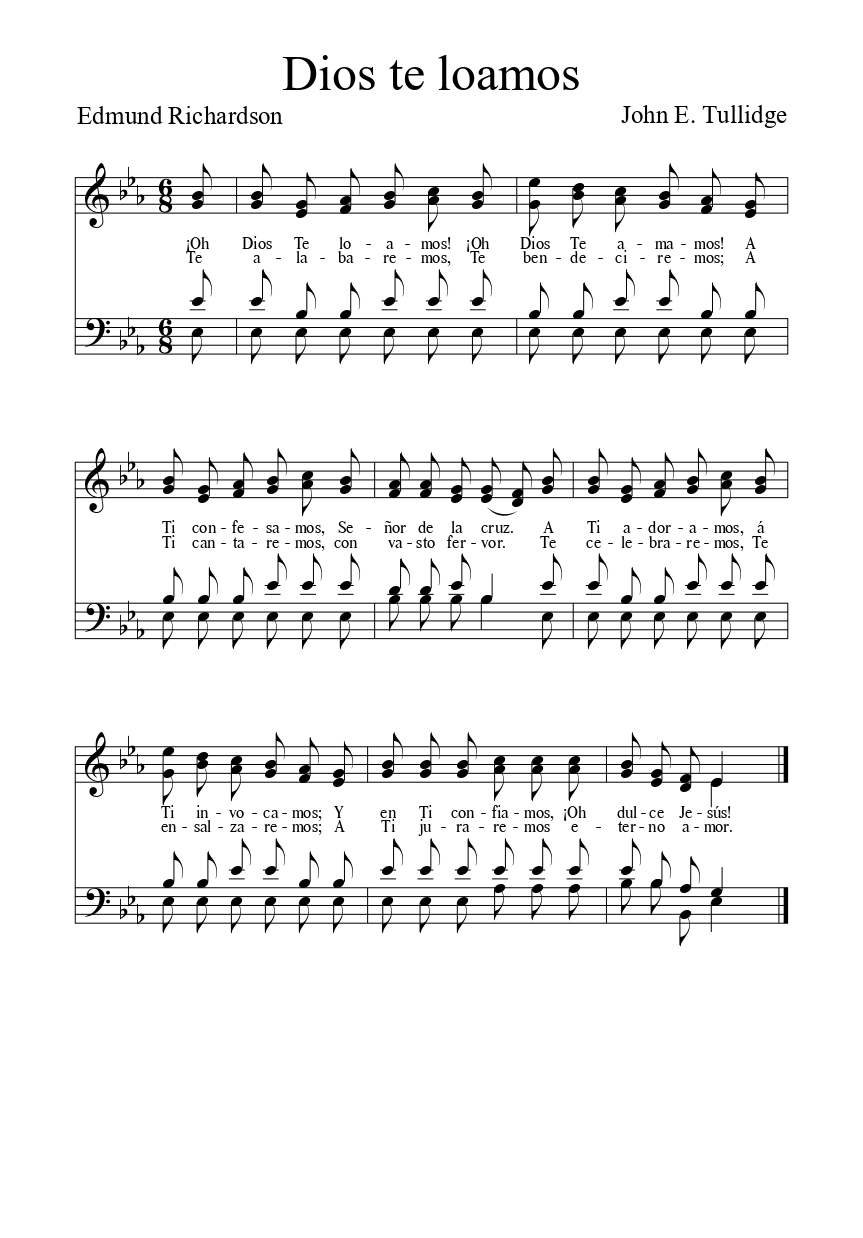
“Dios Te Loamos”
“Dios Te Loamos” by Edmund Richardson was one of the shorter original hymns included in the Mexican Mission hymnals. That being said, I am fond of this text.
-
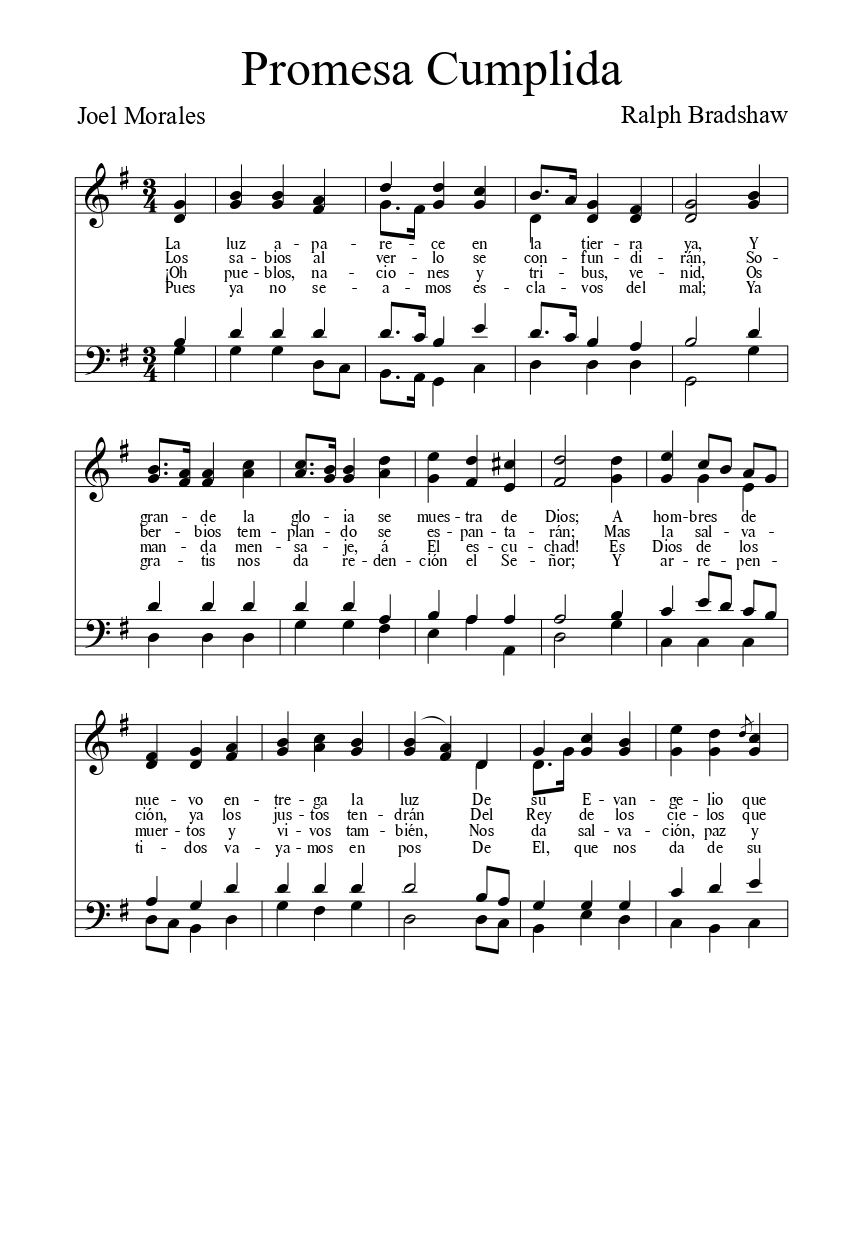
“Promesa cumplida”
“Promesa cumplida” by Joel Morales is a fantastic example of hymns about the Great Apostasy and the Restoration of the Gospel of Jesus Christ in Mexican Latter-day Saint literature.
-
“El Tiempo Ha Llegado” and “Te glorificamos, oh Dios”
There were two hymn texts in the Mexican Mission hymnals that I wasn’t really sure what to do with: “El Tiempo Ha Llegado” and “Te glorificamos, oh Dios.”
-
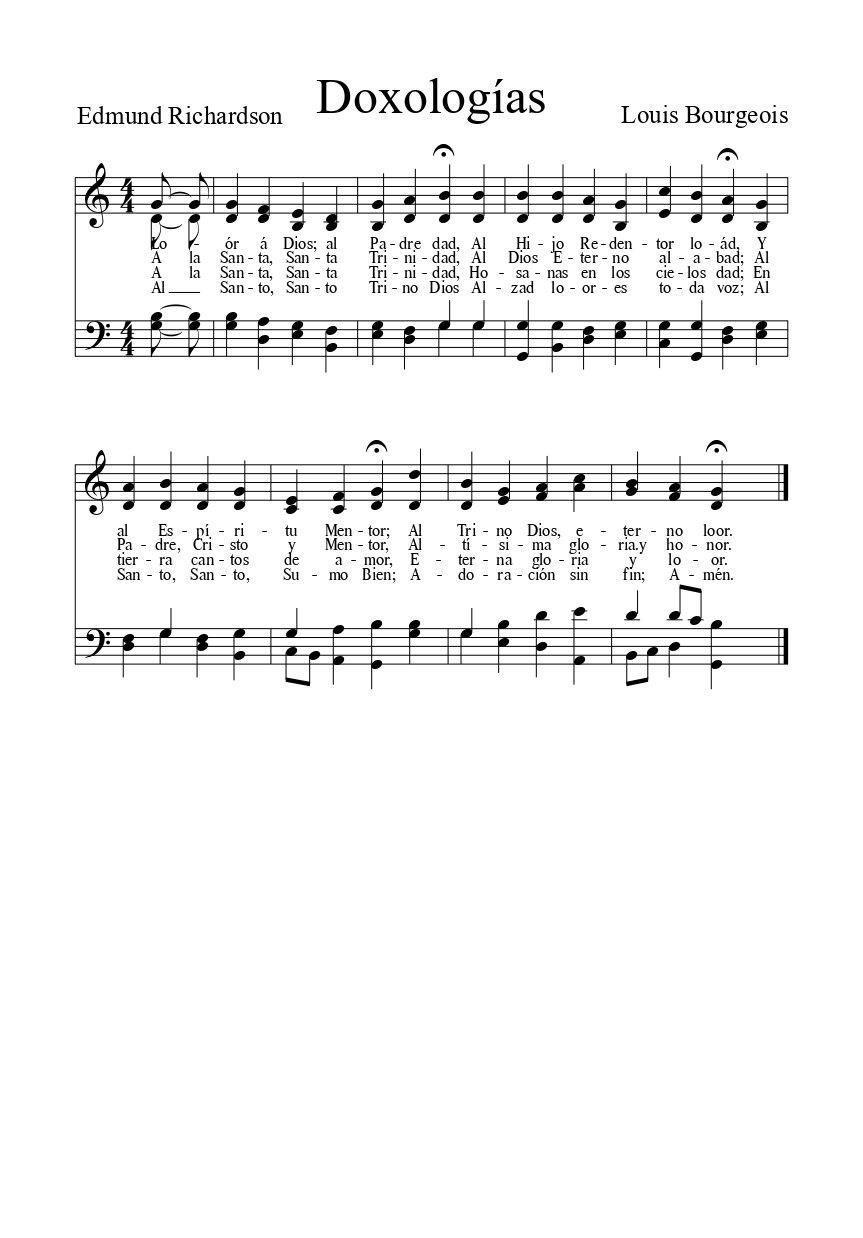
Doxologías
Doxologías is an expanded text based on “Praise God from Whom All Blessings Flow”, but it was eventually phased out in favor of the latter by the time that the 1942 hymnal was published.
-
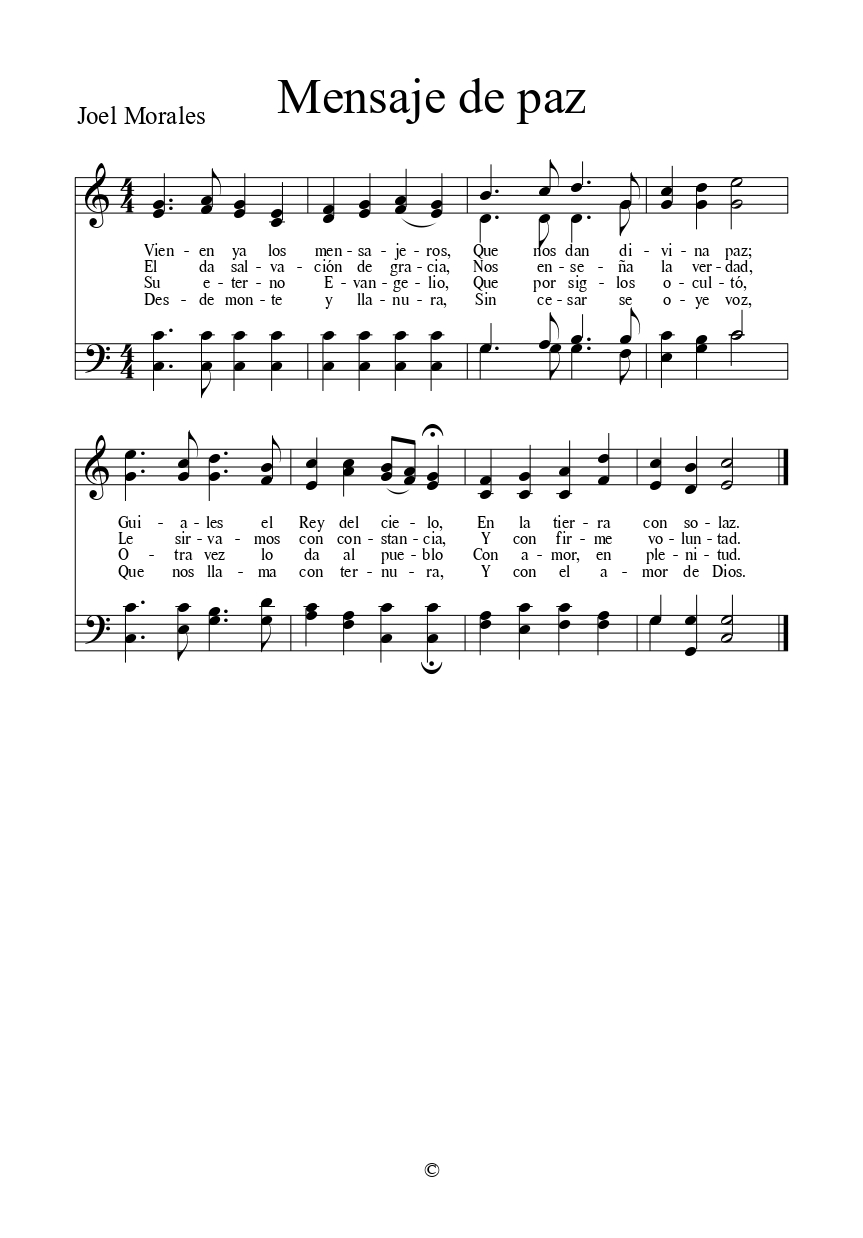
“Mensaje de paz”
“Mensaje de paz” by Joel Morales is notable as being the song that was sung when Elder Melvin J. Ballard and then-ambassador J. Reuben Clark, Jr. visited with the Latter-day Saints in Mexico in 1932. Morales is also the author of “La Proclamación” and “Final.”
-
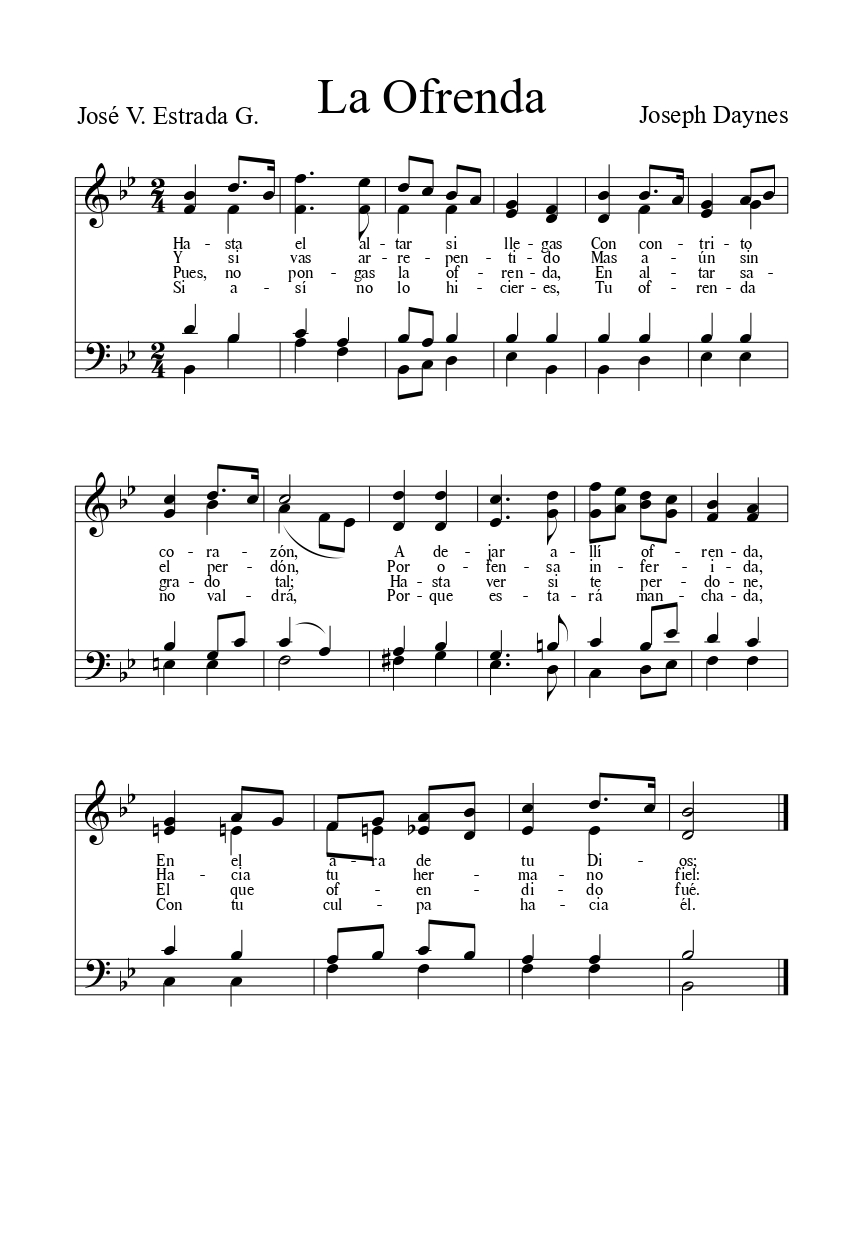
“La Ofrenda”
“La Ofrenda” is a sacrament hymn written by José V. Estrada G. It is possible that it was based on “Venid Hermanos En La Fe” by Edmund Richardson or drew inspiration from similar places. It is one of the hymns that was only published in the 1912 edition of the Mexican mission hymnals.
-
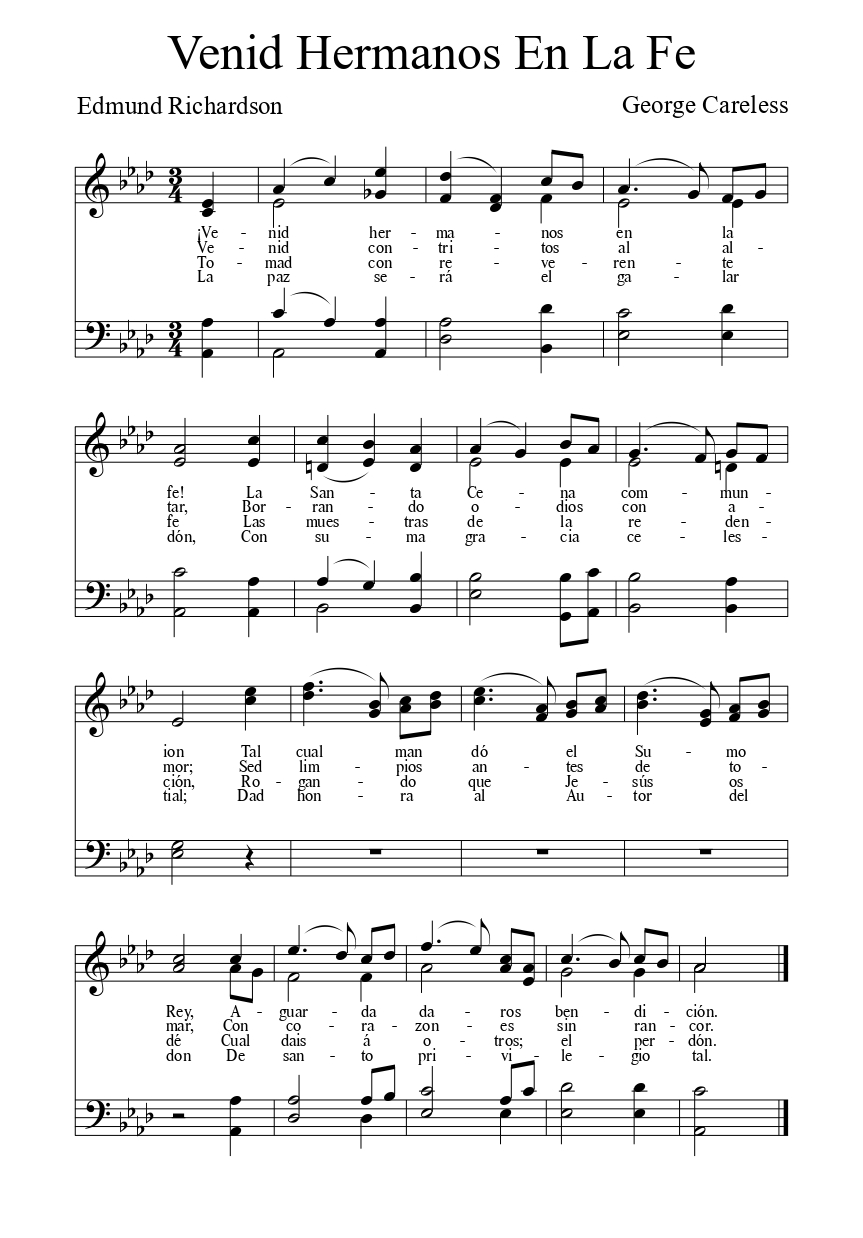
“Venid Hermanos En La Fe”
“Venid Hermanos En La Fe” is another example of the prolific hymn writer Edmund Richardson. It bears some notable resemblances to “La Ofrenda,” another sacrament hymn written by José V. Estrada G., though the Richardson text was written first.
-
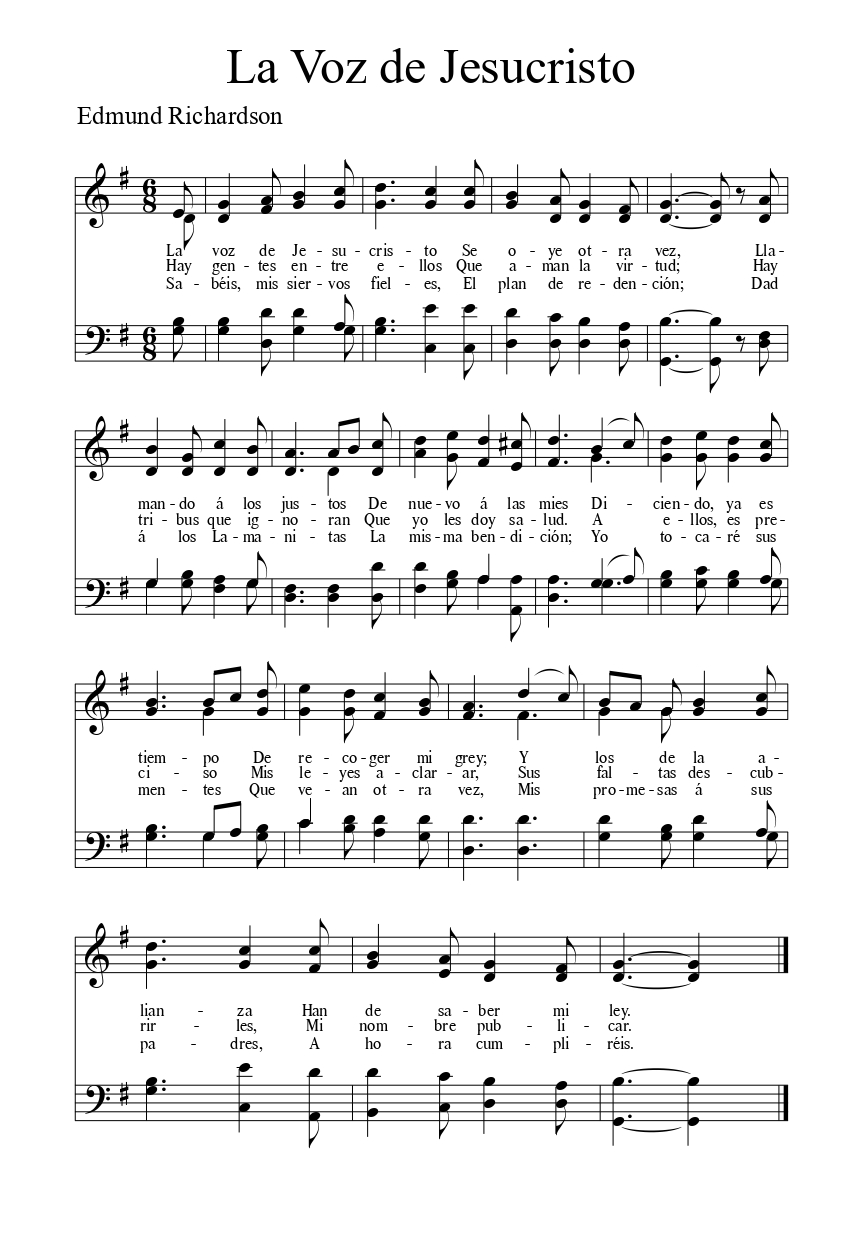
“La Voz de Jesucristo”
As mentioned previously, Edmund Richardson seems to have had a particular interest in linking indigenous Mexican peoples to the Book of Mormon narrative and “La Voz de Jesucristo” is the third example of this. For some relevant historical analysis, see the following posts:
-
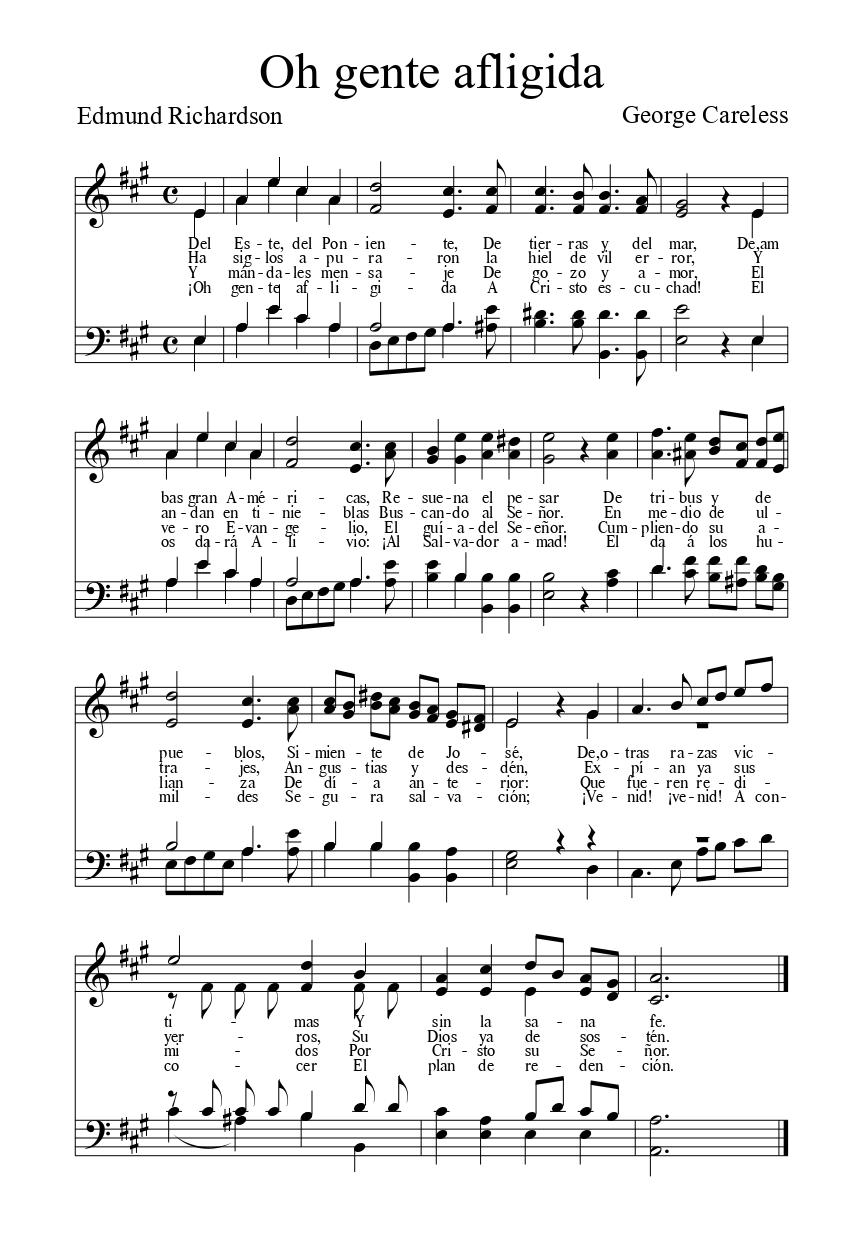
¡Oh gente afligida!
Edmund Richardson seems to have had a particular interest in linking indigenous Mexican peoples to the Book of Mormon narrative. In many ways, however, his approach was a colonizing narrative in which the indigenous peoples were ignorant, benighted peoples in need of civilizing through the efforts of Euro-American Latter-day Saints. “¡Oh gente afligida!” is just one…
-
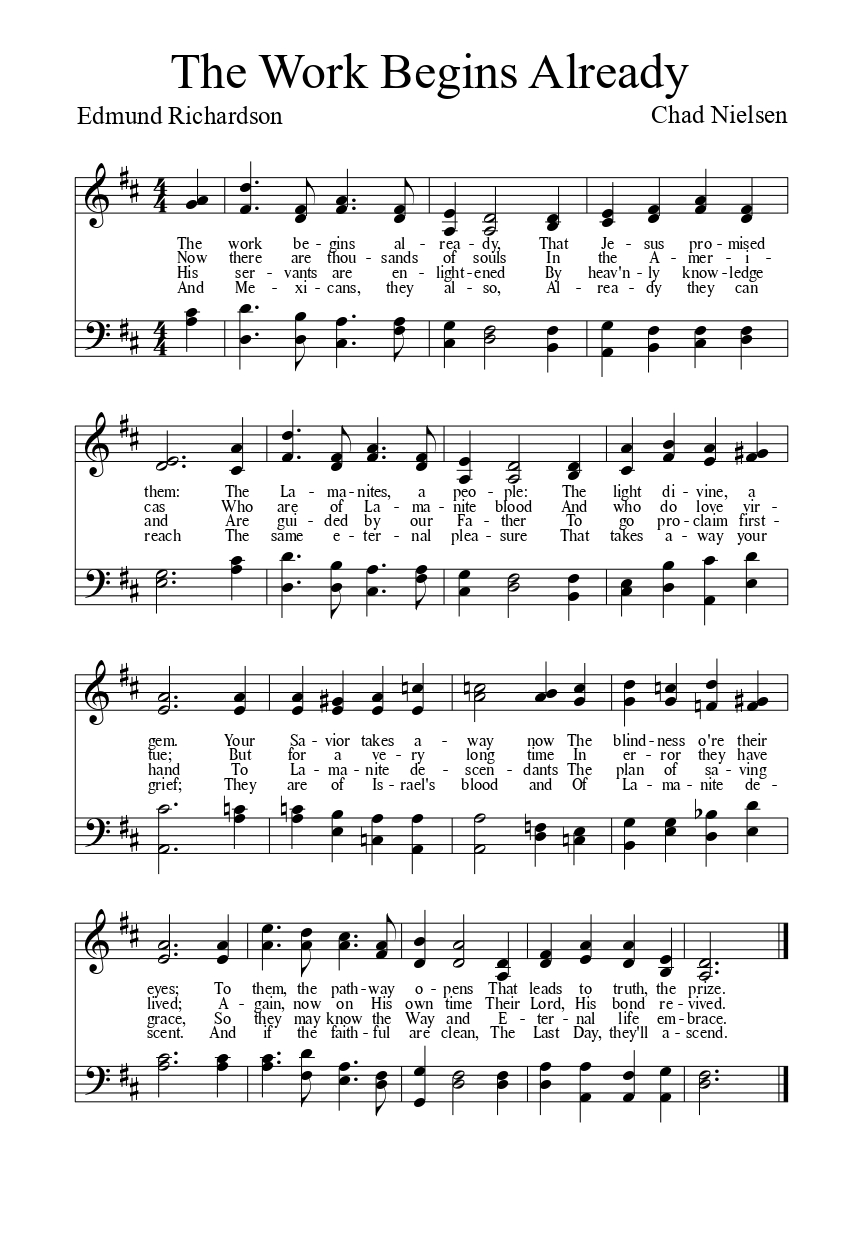
“La Obra Ya Empieza”
“La Obra Ya Empieza” was one of the original hymns included in the 1907 Himnario Mormón (the first Spanish-language hymnbook in the Church). Written by the prolific hymn-writing colonist Edmund Richardson, it was originally a text with no tune specified for singing. In the 1940s red hymnbook, it appeared with an unidentified tune for the…
-
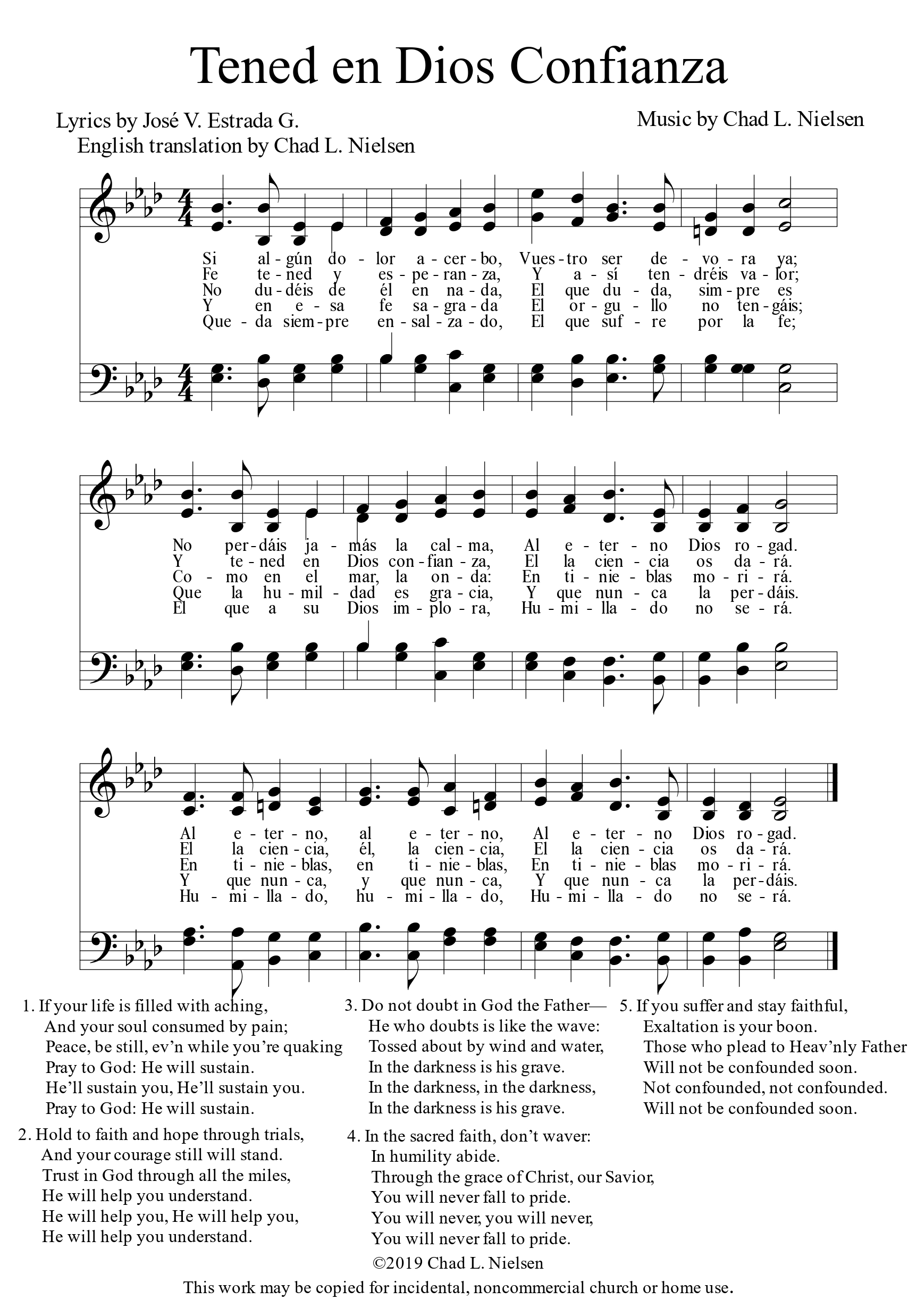
“Tened en Dios Confianza”
I have not been able to find out much about “Tened en dios confianza,” nor about its author, José V. Estrada G. On a more personal note, however, this was the first hymn that I worked with when I started contemplating the Mexican Mission Hymns Project around six years ago. The original music for the…
-
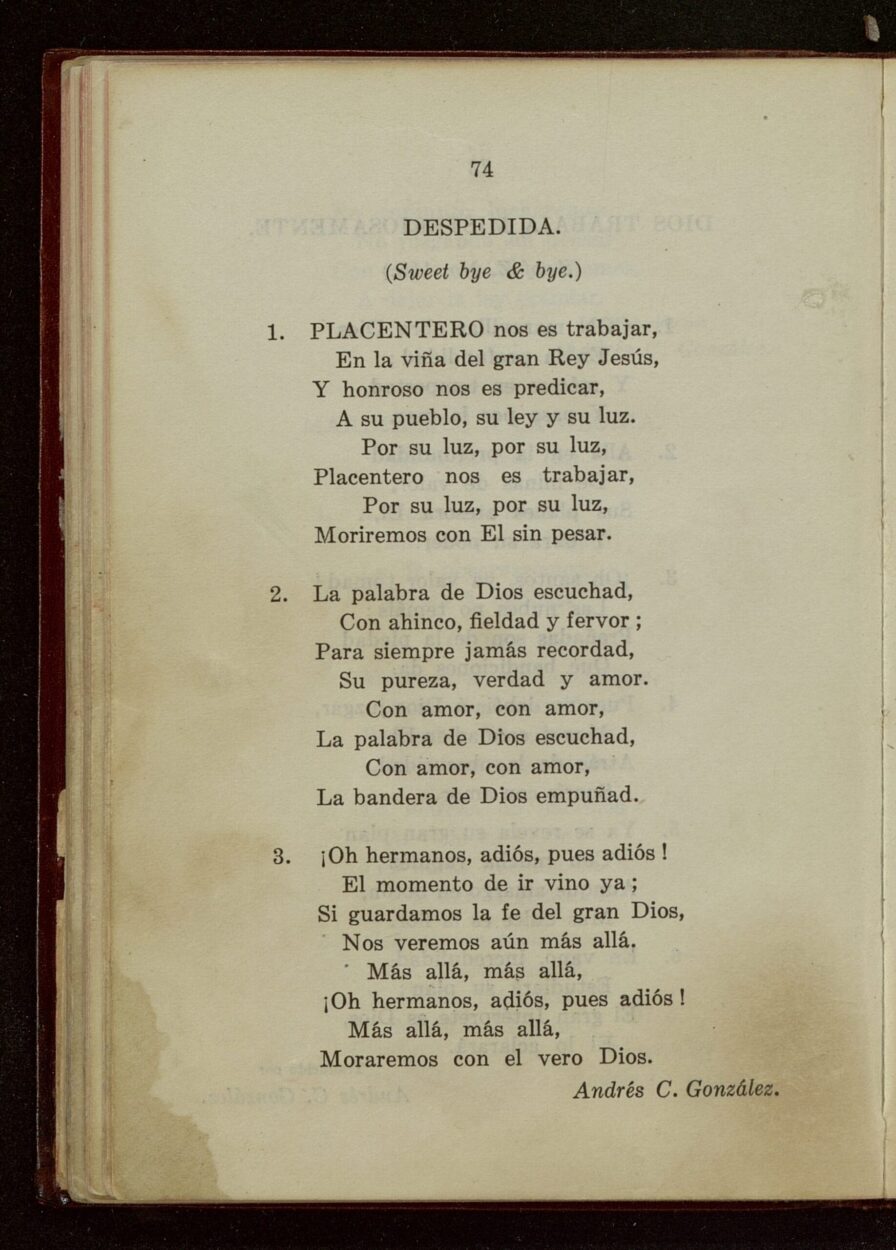
“Placentero nos es trabajar”
“Placentero nos es trabajar” or “Despedida” is one of the more popular hymns that is included in Latter-day Saint hymn books, written by a Latter-day Saint, but not in the English hymnal at this time. Hence, I’ve been consistent in pointing it out as a likely candidate for inclusion in the forthcoming hymnal. While I’ve…
-
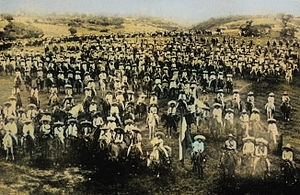
Mormonism in Mexico, Part 15: War
The Mexican Revolution impacted every Mexican, and that included the Mexican Latter-day Saints, some of whom did their best to stay out of the conflict, some of whom became casualties of war, and some of whom joined in the revolution.
-
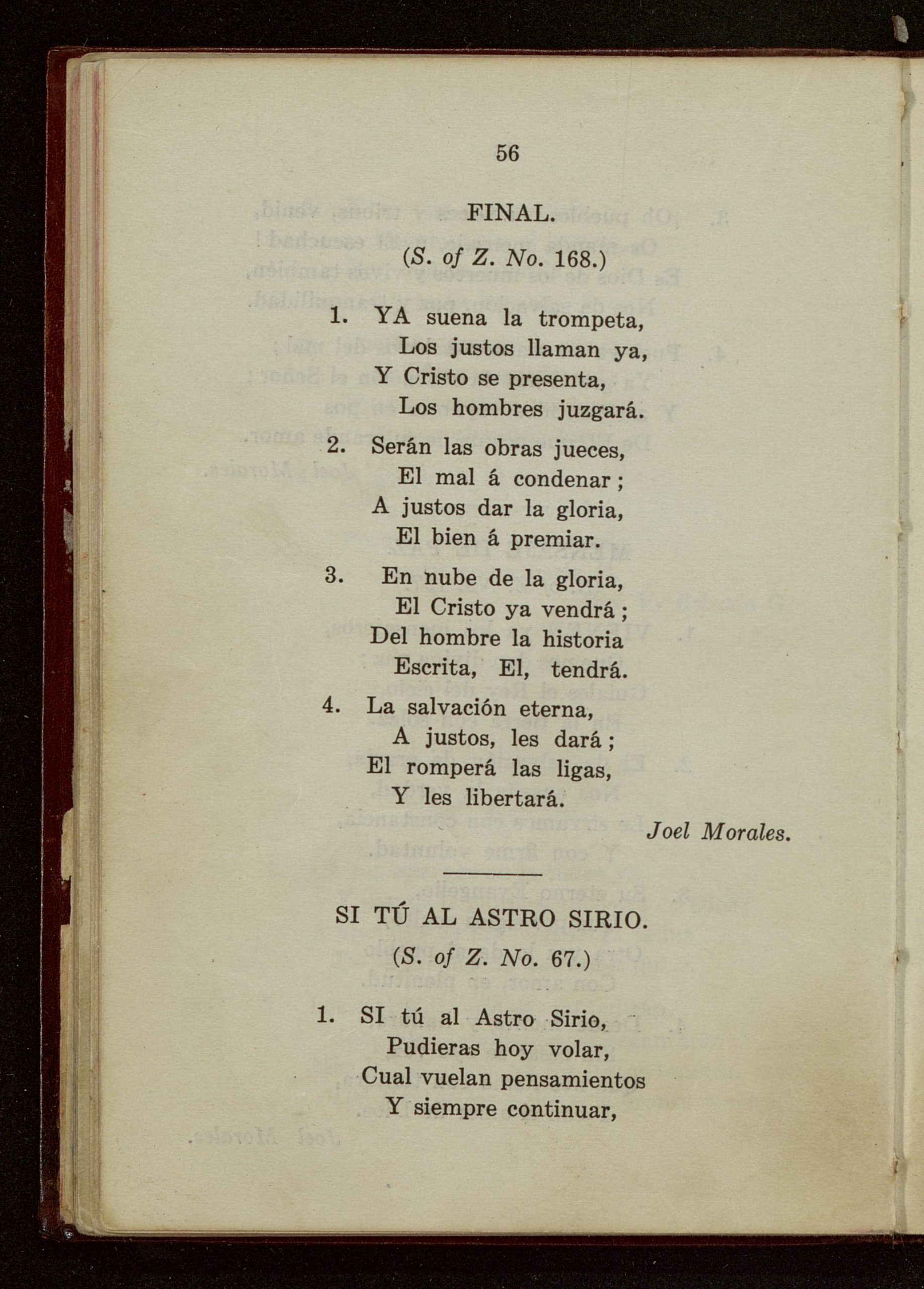
“Final”, Mexican Mission Hymns, Part 9
“Our Savior, Jesus Christ, understands our pains and our afflictions. He wants to ease our burdens and comfort us.”[1] ~Moisés Villanueva Note: This is a part of an ongoing series, the Mexico Mission Hymns Project. Hymn Text: “Final”, by Joel Morales was included in the Spanish hymnals from 1912 – 1992. The 1912 hymnal indicates…
-
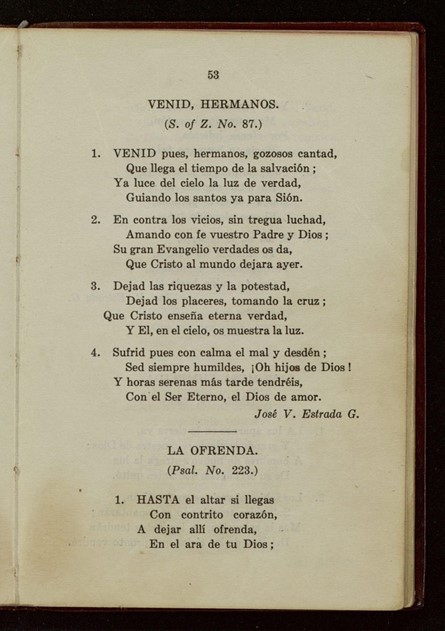
“Venid, Hermanos”: Mexican Mission Hymns, Part 8
To the degree that members of the Church live the gospel and follow the counsel of the prophets, they will, little by little and even without noticing it, become sanctified. Humble members of the Church who conduct daily family prayer and scripture study, engage in family history, and consecrate their time to worship in the…
-
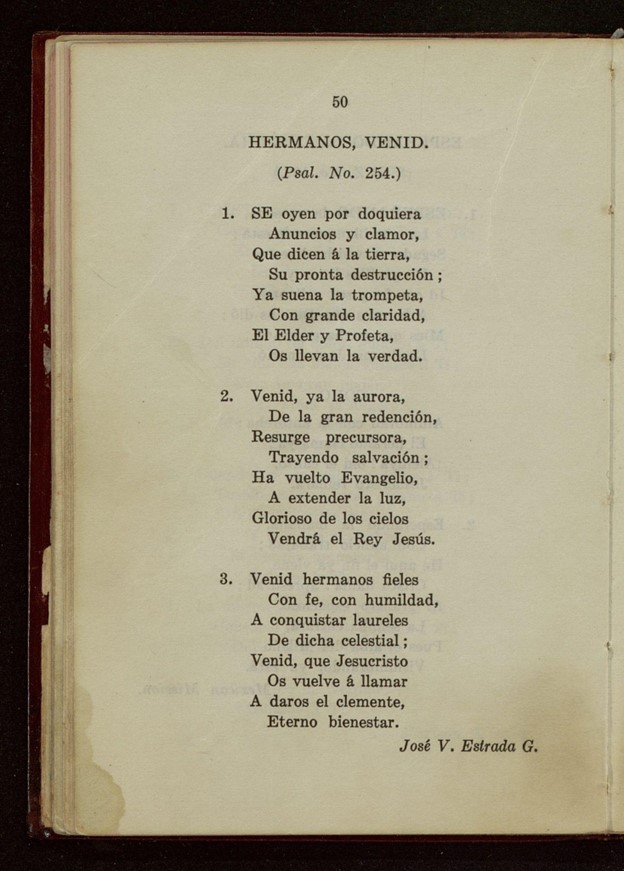
“Hermanos, Venid”: Mexican Mission Hymns, Part 7
Problems form an important part of our lives. They are placed in our path for us to overcome them, not to be overcome by them. We must master them, not let them master us. Every time we overcome a challenge, we grow in experience, in self-assuredness, and in faith.[1] ~Horacio A. Tenorio Note: This is…
-
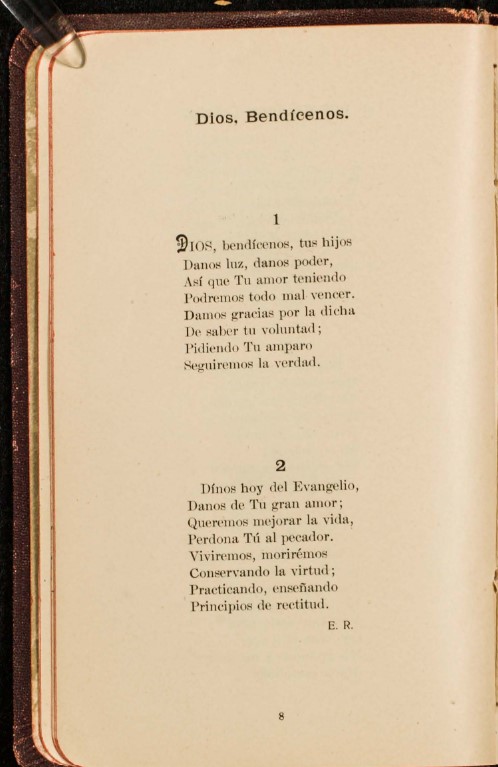
Dios, bendícenos: Mexican Mission Hymns, Part 6
LNote: This is a part of an ongoing series. To start at the introduction, follow the link here. Hymn Text: “Dios, bendícenos”, by Edmund Richardson, is an interesting example of a hymn where it’s not clear if it’s meant to be an original text, a translation of an existing hymn, or something in between. It…
-
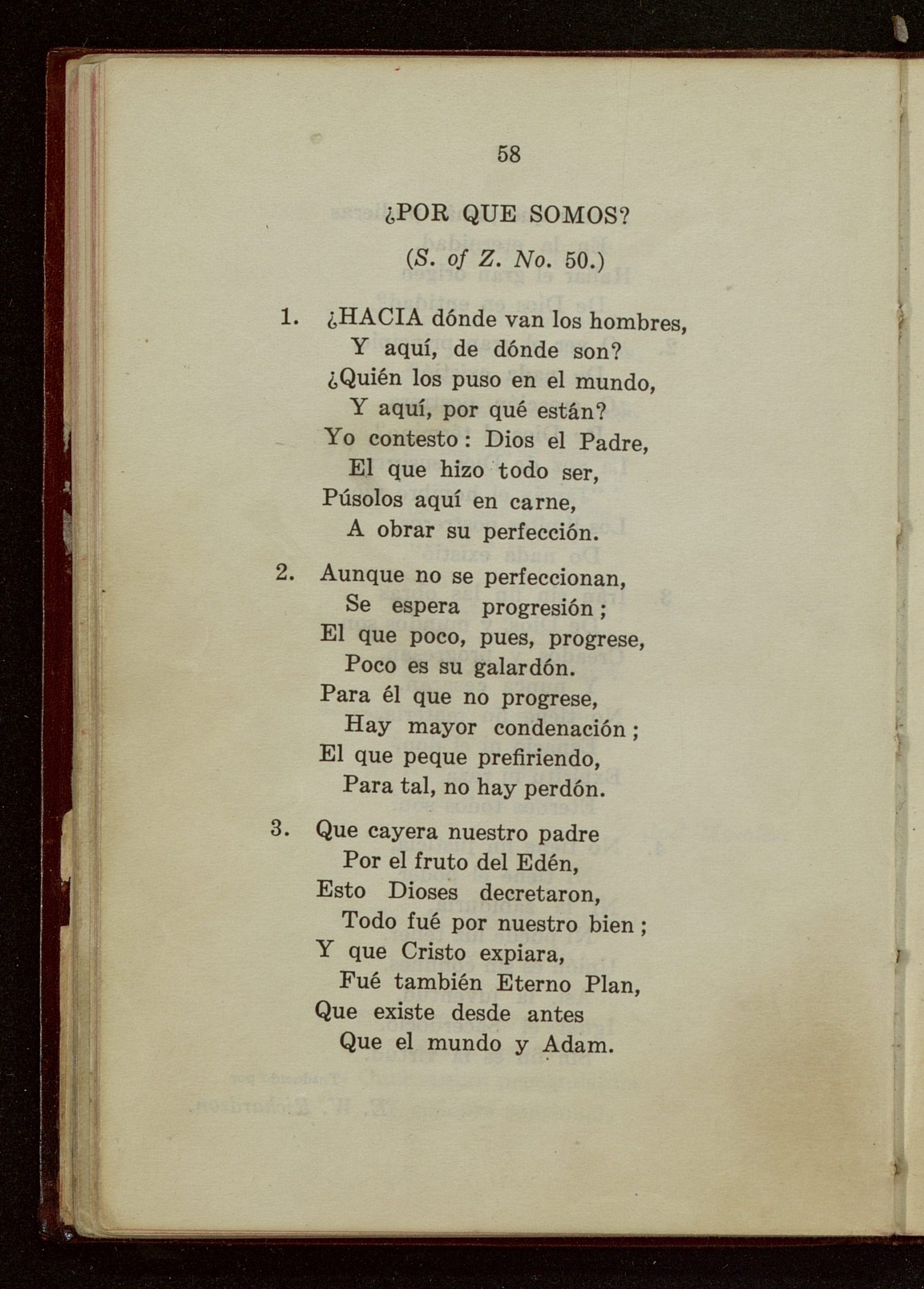
¿Por qué somos?: Mexican Mission Hymns, Part 5
Our Father knows and loves His children all over the world, from Boston to Okinawa, from San Antonio to Spain, from Italy to Costa Rica. In Ghana, President Gordon B. Hinckley recently thanked the Lord “for the brotherhood that exists among us, that neither color of skin nor land of birth can separate us as…
-
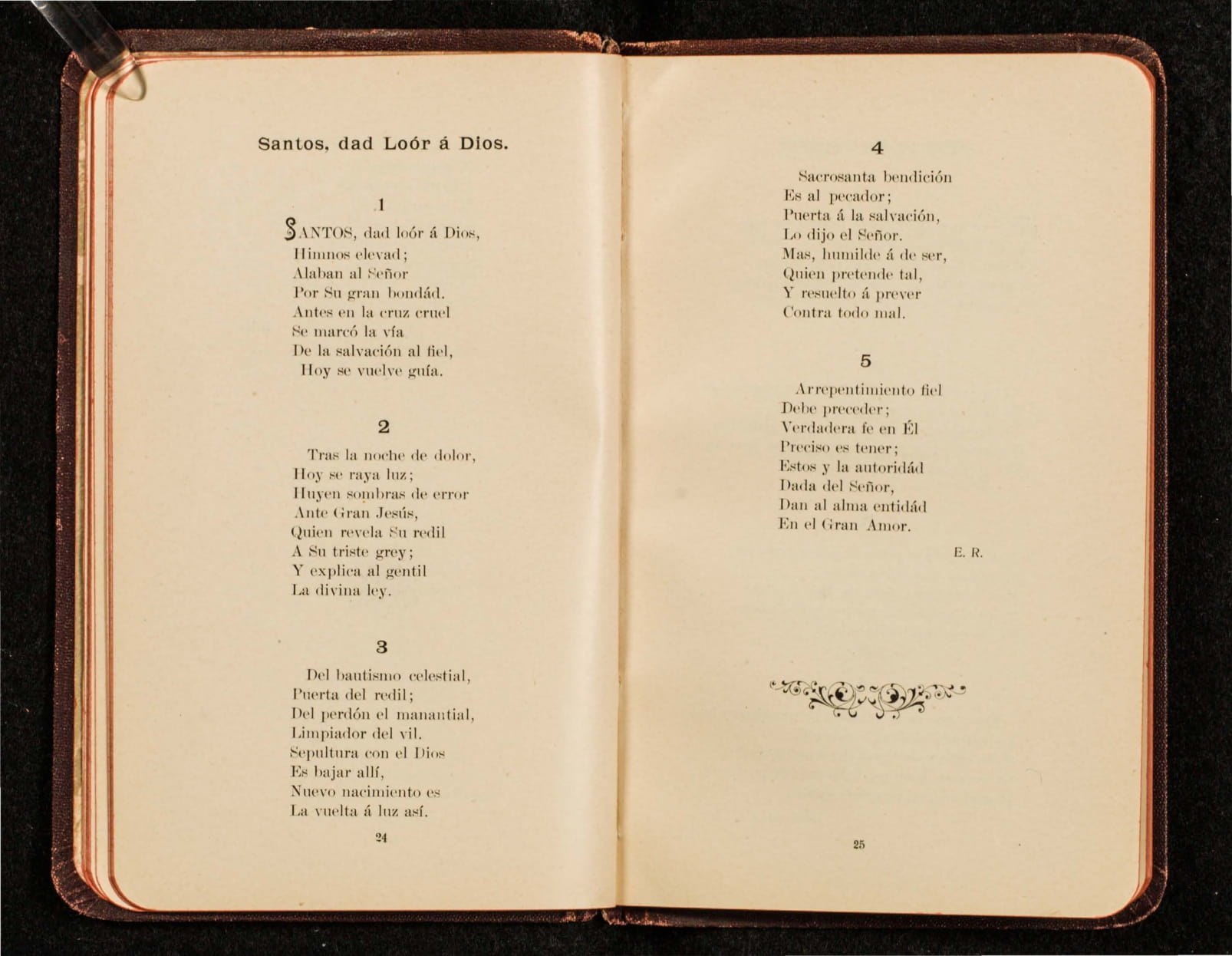
Santos, Dad Loor á Dios: Mexican Mission Hymns, Part 4
What greater power can you acquire on earth than the priesthood of God? What power could possibly be greater than the capacity to assist our Heavenly Father in changing the lives of your fellowmen, to help them along the pathway of eternal happiness by being cleansed of sin and wrongdoing?[1] ~Adrián Ochoa Note: This…
-
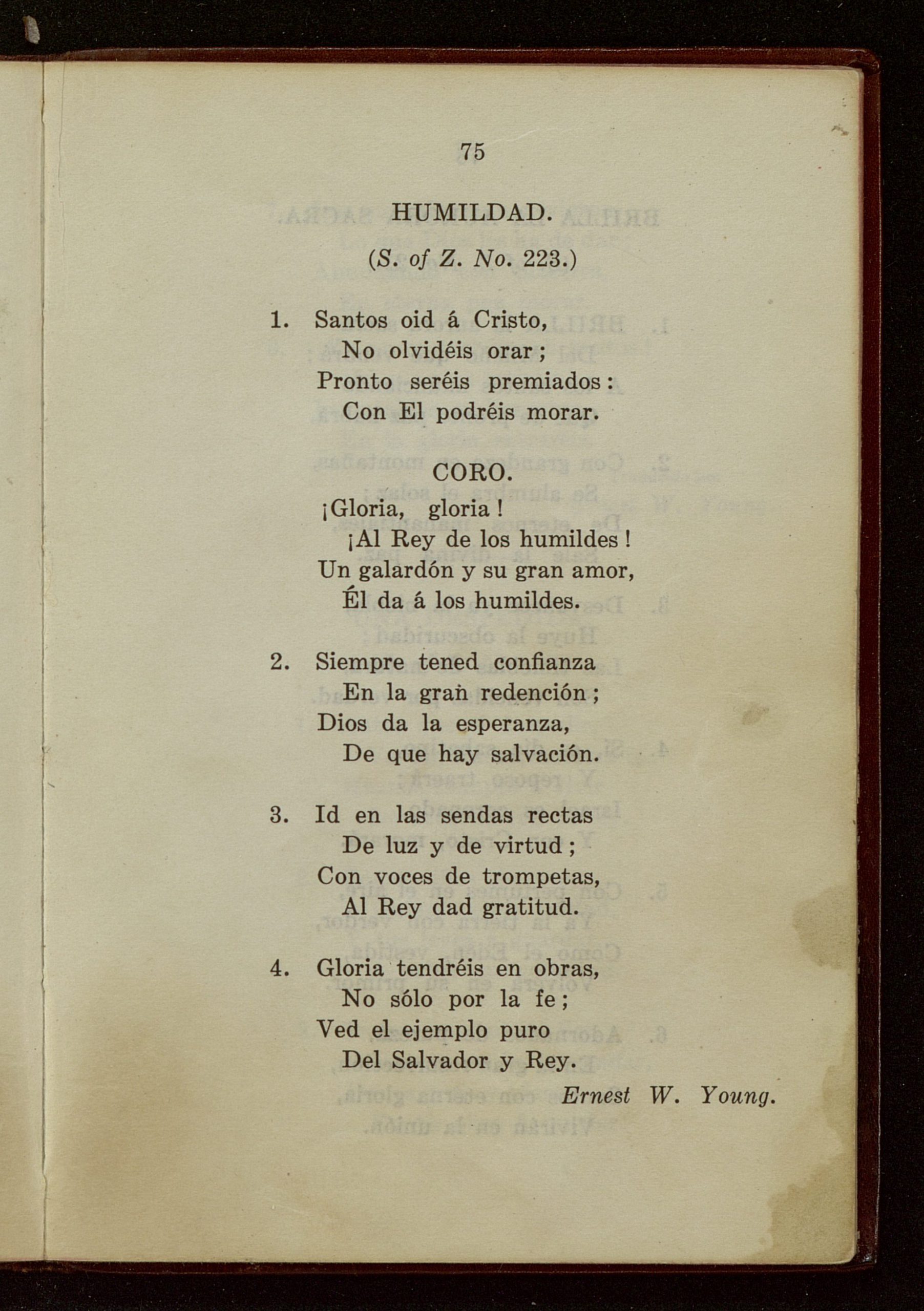
Humildad: Mexican Mission Hymns, Part 3
Oh, beloved brethren! Let us always remember the teachings of the prophets, let us always remember the teachings of our Lord Jesus Christ which he brought us in the meridian of time. Let us remember also his exhortations to our people here in the Americas, which are recorded in the Book of Mormon; let us…
-
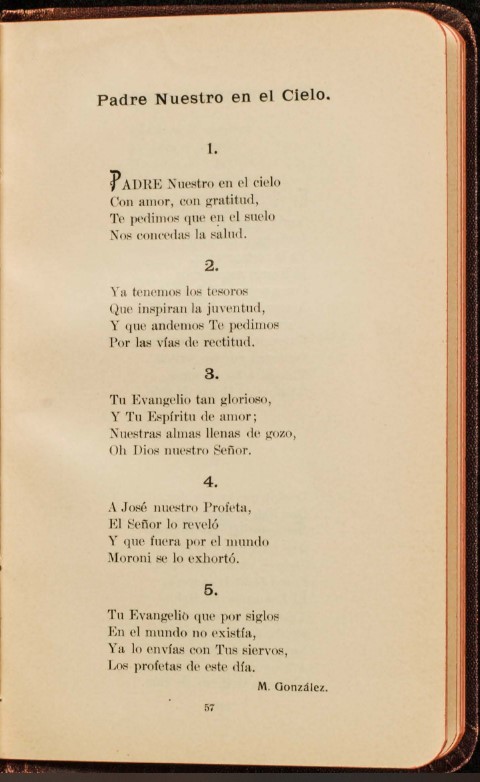
Padre Nuestro en el Cielo: Mexican Mission Hymns, Part 2
Note: This is a part of an ongoing series, the Mexico Mission Hymns Project. Hymn Text: Padre Nuestro en el Cielo by Manrique González was one of the earliest-published Spanish hymns in the Church of Jesus Christ of Latter-day Saints. It was published in the 1907 Mexican Mission Himnario Mormón (p. 57, see Figure 1)…
-
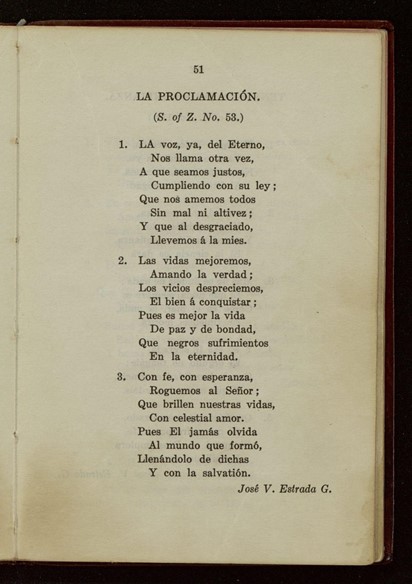
La Proclamación: Mexican Mission Hymns, Part 1
“I know for myself that Joseph Smith was a prophet because I have applied the simple promise in the Book of Mormon: ‘Ask God, the Eternal Father, in the name of Christ’ (Moroni 10:4). In simple words, look up.”[1] ~Adrián Ochoa Note: This is a part of an ongoing series, the Mexico Mission Hymns Project.…
-
Announcing a Mexico Mission Hymns Series
I’m excited to announce a new project that I’ll be sharing on Times and Seasons over the next few months – my Mexico Mission Hymnody project. A few years ago, a future new edition for the Hymns of the Church of Jesus Christ of Latter-day Saints was announced. While working on what would become my…
